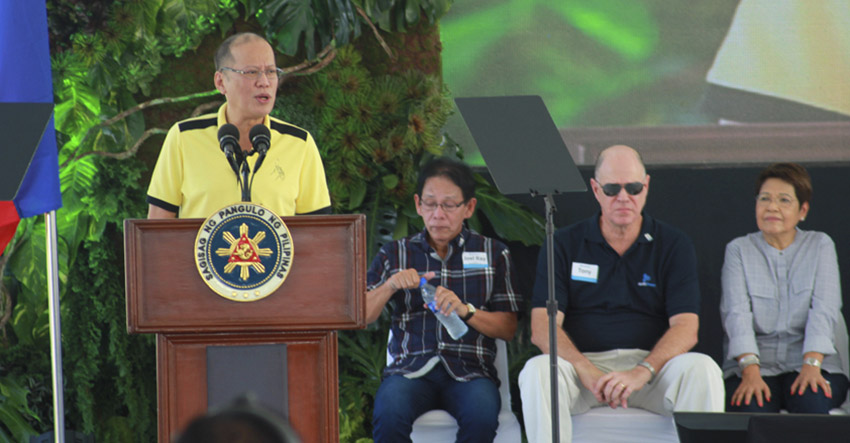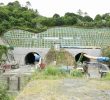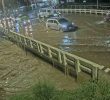
RENEWABLE ENERGY COMMITMENT. President Benigno Aquino III says the government has not forgotten its effort to develop renewable energy.(Ace R. Morandante/davaotoday.com)
DAVAO CITY – President Benigno Aquino III graced the opening of the 300-megawatt coal fired power plant here and warded off criticism from environmentalists saying the country cannot wean completely from relying on coal to address power supply needs.
During the inauguration held at the power plant in Barangay Binugao, Toril district, the President recalled the state of the country’s energy sector where the National Power Corporation’s debt ballooned to P1.2 trillion pesos.
Aquino said the total amount represented a quarter of the country’s debt.
“I believe at that point, everyone knew the situation was untenable. After all, how could we, as a nation, continue servicing these debts much more pay them all completely, while also allocating enough resources for infrastructure, health care, education and other necessary services,” said Aquino.
He said to address the problem, the government has approved the Electric Power Industry Reform Act of 2001.
“The plan: for Napocor to sell its plants to private entities with the proceeds being used to pay our debts, thus freeing up the necessary fiscal spaces for more projects and programs that directly benefit our people,” said Aquino.
He said this also professionalized the power sector through the private sector.
“Legislators from Mindanao, however, asked for a 10-year exemption from EPIRA. Perhaps it made sense in the short term. They pointed out that there was an oversupply of power in the region and that their energy was far cheaper compared to Luzon and Visayas. To be frank, making this exemption would have been fine if the situation have not changed. But the situation has changed,” said Aquino.
He said the demand for energy continued to grow with the economy growing.
“But the EPIRA prohibits government from putting up its own plants and the private sector simply could not compete with artificially low prices. The result: as the demand for the electricity grew, the supply did not,” the president said.
He added that the hydroelectric plants in Mindanao suffered from a number of factors “including the lack of regular maintenance, the vanishing watersheds and the worsening effects of climate change.”
“This was the situation that our administration inherited, and the results were clear: in recent years Mindanao has had very little energy surplus. In 2010, this resulted in rotating brownouts that understandably frustrated our countrymen and that stifled local economies,” he said.
Aquino said when the 300 MW Davao Base Load Power Plant becomes fully operational, “we can count on it to consistently produce 300 megawatts of base load power, which means that this capacity can be tapped into anytime, rain or shine, with very minor fluctuations.”
He said the plant’s capacity is “roughly equivalent to one-fifth of the Mindanao grid’s highest peak demand in 2015—and it is already delivering power to areas at the end of the grid, such as Sarangani, General Santos, and the Zamboanga peninsula.”
Aquino also said that the government has not forgotten its targets in developing renewable energy and its efforts to mitigate the effects of climate change.
He said the country has now increased the usage of renewable energy, which make up “33 percent of our energy mix”.
“At this point we are still hounded by the questions: what if there’s no wind? What if the clouds are overcast? And the solar efficiency is down? What if we do not have enough bio mass? Unfortunately, right now we cannot wean ourselves completely from relying on coal,” said Aquino.
The president also said that there are at least 11 power projects in Mindanao that will come online between 2016 and 2020.
The projects are envisioned to produce at least another 675.30 megawatts of capacity, which will be more than enough to cover the projected increase in demand for those years, he said.(With a report from Ace R. Morandante/davaotoday.com)










